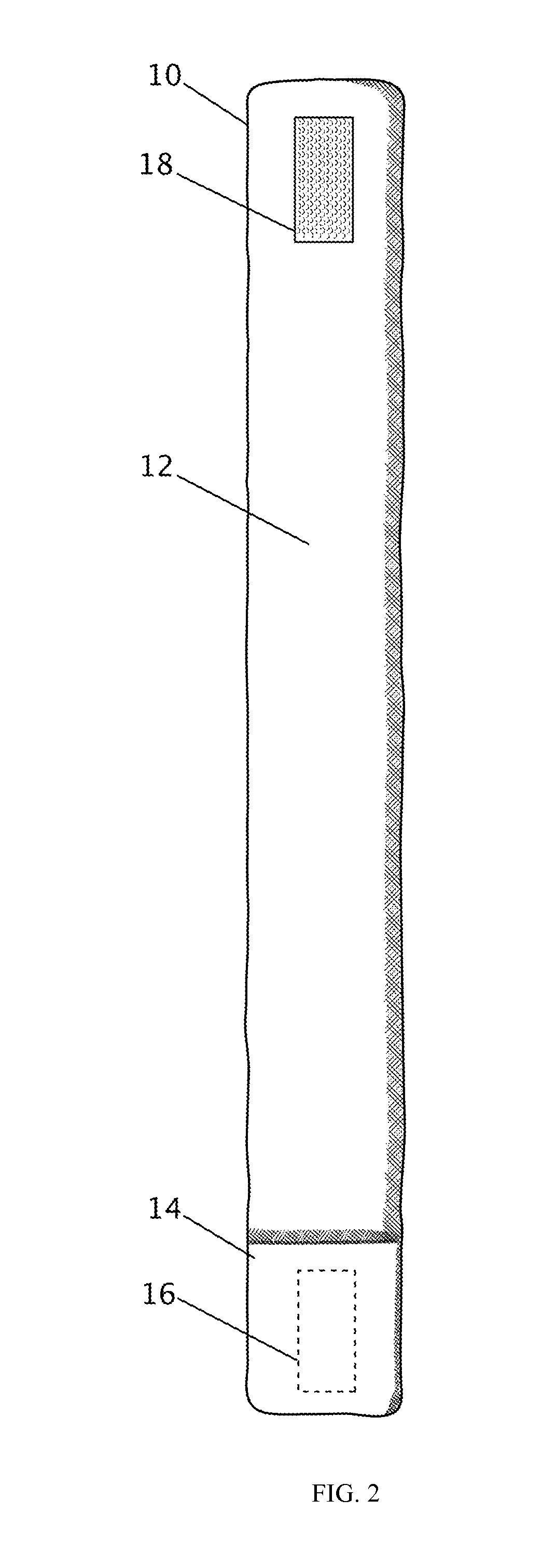Head encircling sensory deprivation pillow
a head encircling sensory and pillow technology, applied in the field of pillows, can solve the problems of limiting the benefits of sleep period, user to use a separate, expensive and bulky pillow device, and individual sleep, and achieve the effect of reducing auditory disturbance and being easy to adjus
- Summary
- Abstract
- Description
- Claims
- Application Information
AI Technical Summary
Benefits of technology
Problems solved by technology
Method used
Image
Examples
Embodiment Construction
[0026]While preferable embodiments of the invention have been shown and described herein, it will be obvious to those skilled in the art that such embodiments are provided by way of example only. Numerous variations, changes, and substitutions will now occur to those skilled in the art without departing from the invention. It should be understood that various alternatives to the embodiments of the invention described herein can be employed in practicing the invention.
[0027]In embodiments of the invention, sleep-enhancing devices (also “rest-enhancing devices” herein) are provided for occluding noise and sound during sleep, while providing a user comfort in both design and use. In addition, sleep-enhancing devices of embodiments can be more economical and efficient in construction and use when compared to at least some prior art sleep-enhancing devices. Sleep-enhancing devices of embodiments can advantageously remain effective even if shifted during use, and provide substantial paddi...
PUM
 Login to View More
Login to View More Abstract
Description
Claims
Application Information
 Login to View More
Login to View More - R&D
- Intellectual Property
- Life Sciences
- Materials
- Tech Scout
- Unparalleled Data Quality
- Higher Quality Content
- 60% Fewer Hallucinations
Browse by: Latest US Patents, China's latest patents, Technical Efficacy Thesaurus, Application Domain, Technology Topic, Popular Technical Reports.
© 2025 PatSnap. All rights reserved.Legal|Privacy policy|Modern Slavery Act Transparency Statement|Sitemap|About US| Contact US: help@patsnap.com



